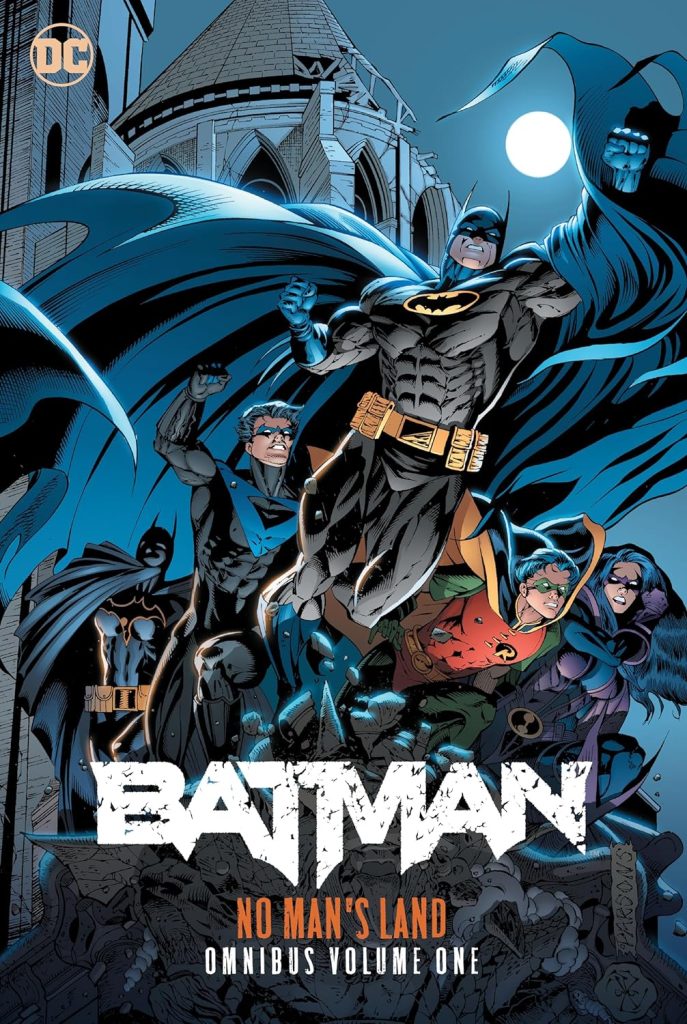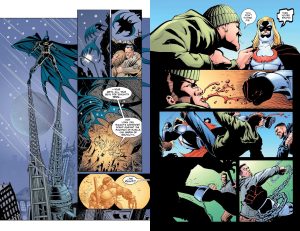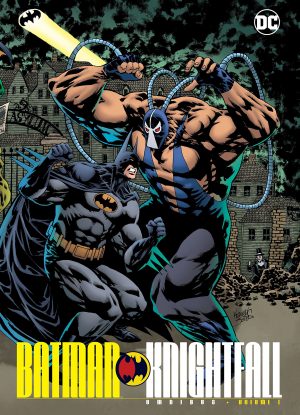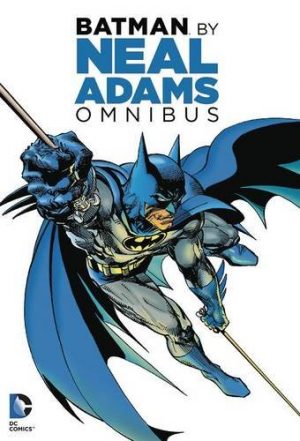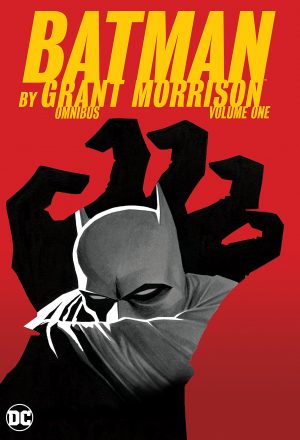Review by Frank Plowright
Gotham City’s crimefighting community was occupied by ‘No Man’s Land’ throughout 1999 and into 2000, generating so much material that a single massive Omnibus wasn’t an option, so Volume 2 provides the conclusion and epilogue. In this format, events continue from Road to No Man’s Land Omnibus.
As we start, an earthquake has reduced much of Gotham to rubble, and the national authorities have decided the costs of restoration aren’t viable. Citizens have been evacuated, bridges and tunnels closed, and it’s only the lawless and dispossessed who remain. The ruins have been carved up into territories, each zealously guarding their supplies, with Bob Gale’s introductory story reinforcing the exotic value of an apple when fresh food has disappeared. Most territories are controlled by Batman’s villains, with the Penguin a recurring mover and shaker, but what remains of Gotham’s police department also hold an area. Gale also establishes that while guns are easily found, bullets come at a premium, and it places a novel restriction on an action thriller, and the situation removes so much of what enables Batman to operate successfully.
No Man’s Land differs from the other 1990s Batman crossovers, as instead of rotating teams of creators continuing from someone else’s script, it serves up individual events by different creative teams within the broader context of a devastated Gotham. Some might be telling a story just sparked by the circumstances, while others will move things forward slightly, perhaps an adjustment of contested territory, or a player removed from the board. It’s altogether more satisfactory compared with the sprawl of earlier Batman crossovers, as switches of creator mid-story, continuity glitches and coasting are all-but eliminated by the method. Having noted that, though, in this form No Man’s Land is hardly all killer with no filler.
This combines what was released in 2011 as No Man’s Land Volume 1 and Volume 2, seen at the time as the definitive editions collecting the exploits of all Gotham’s crimefighters from their solo titles. So as well as Batman, we catch up on what Azrael, Catwoman, Nightwing and Robin are up to, many of these sidelines served up by less creative writers, for which Chuck Dixon has to be singled out on both Nightwing and Robin. He’s a go-to talent for the straightforward thriller, but his contributions make virtually no use of the circumstances, lack invention and feature feeble threats.
The bigger than standard format shows off the art to better advantage, and it’s only a few artists who don’t supply first rate superhero action. The sample art combines pages from two of the most frequent contributors, Mike Deodato and Roger Robinson, with Deodato nearer the style he’s known for than Robinson. However, over the opening half in particular it’s surprising to see a number of artists with stark individual styles giving their interpretations of Gotham.
In its need to be comprehensive, the Omnibus separates the core tales with others of lesser quality. It means that for all the effort taken with production, for a cracking story you’re better off heading for the original 1999 and 2000 No Man’s Land paperbacks, starting with Volume One.
